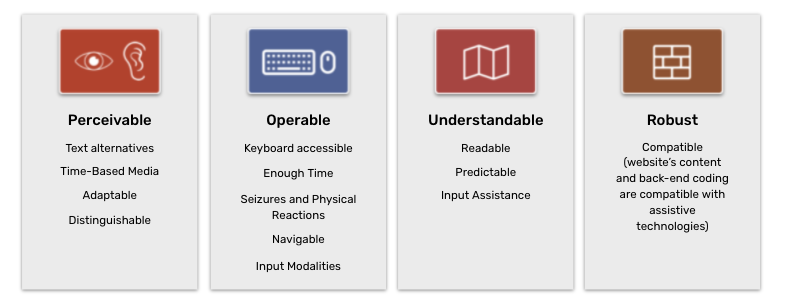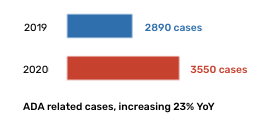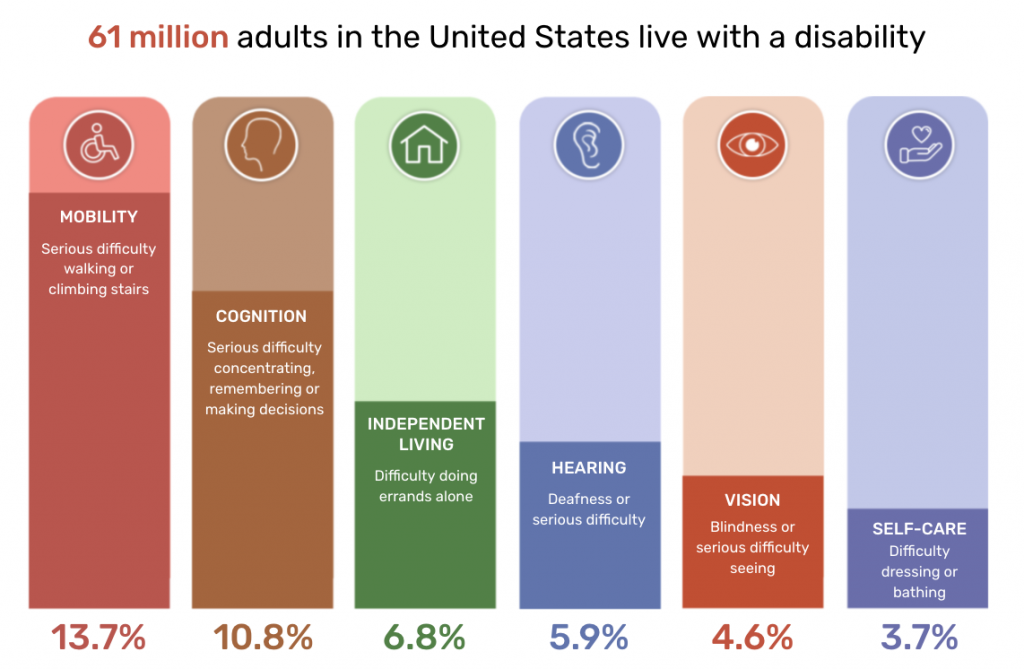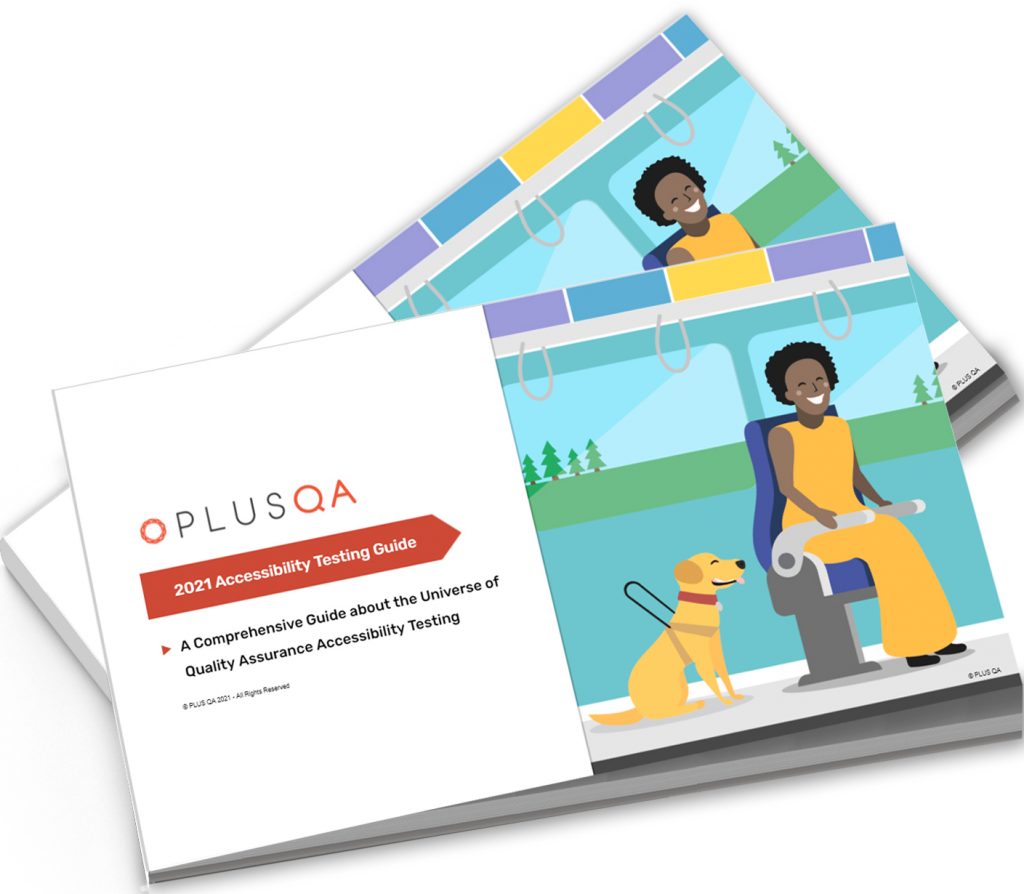Imagine attempting to access a website or application and you are unable to locate desired items, navigate the website or read, see or hear the content. Now, imagine that this is something you encounter almost every day. According to ISE, 98% of webpages are not accessible to the disabled community and in the US alone, 61 million people live with a disability. At PLUS QA, we offer Accessibility testing to address these specific concerns, and as we approach Global Accessibility Awareness Day (GAAD), we wanted to share with you the importance of accessibility and what it means to us.
What is Accessibility and GAAD?
Accessible products and services allow individuals with disabilities to complete tasks or do what they need to do in a similar amount of time as someone who is not disabled. This encourages independence and empowerment, and prevents frustration because of poor design or implementation. Simply put, accessibility is a Civil Right. (https://accessibility.blog.gov.uk/)
Global Accessibility Awareness Day (GAAD) is the third Thursday of May, and this year marks the tenth anniversary! This day is meant to bring awareness to accessibility and we are doing our part by helping companies achieve their digital accessibility goals.
Download our Accessibility Testing Guide to learn more about accessibility testing, and check out some of the highlights below.
How do you Measure Accessibility and How do you Test for It?

PLUS QA started an Accessibility Team in 2015, and in 2019 we partnered with Oregon Commission for the Blind. Since, we have been perfecting our process and creating innovative solutions for clients. We are proud to offer one of the sharpest accessibility teams in the country and have assisted dozens of companies in increasing their website and application usage for millions of users.
There are three different levels of accessibility: A (lowest level), AA (mid-range), and AAA (highest level). Most companies aim to hit the AA level of compliance. Some examples of what is included in the criteria to achieve certain levels of accessibility are video captions being provided, keyboard or mouse-only passes, ease of navigation, and much more. There are different levels of technical standards as well through the Website Content Accessibility Guidelines (WCAG), and depending on what kind of company you are, you may be legally required to comply with certain levels of these guidelines. Currently, there are versions 2.0 and 2.1, an updated version of 2.2 is scheduled to be released later this year.
At PLUS QA, we test for the level of accessibility you’re trying to achieve for your digital space. We would discuss this in our initial conversation and offer recommendations as necessary. We adhere to the POUR principle which is an acronym that includes four high-level principles that describe functional accessibility. Those principles are: Perceivable, Operable, Understandable, and Robust. To test for these we use specific testing tools which include: WAVE, Siteimprove Accessibility Checker, axe DevTools, Colour Contrast Analyser, and an Accessibility Scanner. You can learn more about these principles and tools in our accessibility testing guide.

With several different platforms such as Windows Edge, Firefox, Chrome, and Safari, as well as different operating systems, it is important to ensure everything is covered during testing. Our team is vastly experienced and extremely capable of testing websites and applications with up-to-date engineering designs and processes.
Importance of Accessibility Beyond a Moral Obligation
For several reasons, it is more important than ever for websites and mobile applications to be accessible to everyone. One in four adults in the United States has a disability, but thanks to the American Disabilities Act, websites are now considered a place of public accommodation and as of 2018 should be made accessible to everyone. This means companies are being held to a higher standard. Last year, per a UsableNet study, there were 3,550 lawsuits filed for digital accessibility. This is not only costly, but this is also damaging to a company’s reputation.


Abandonment rates of customers on sites due to usability and accessibility is also something to consider. A staggering 88% of users are less likely to return to a website after a bad user experience. And mobile users are 5 times more likely to abandon a task if the website isn’t optimal for mobile, according to medium.com. This can heavily influence revenue flows. Per Statista.com, in 2020 we surpassed the projected e-commerce spending from 338 billion to 431.6 billion in US dollars. By 2025 revenue is estimated to increase to 563.4 billion dollars. And it is not just websites that are responsible for online sales, per Oberlo.com, mobile commerce (m-commerce) sales are projected to reach $3.56 trillion in 2021 which is 22.3% more than what was registered in 2021.
In the world we currently live in, safety and convenience are major influencers as to why several people prefer shopping online versus in-store. This makes it very clear that a company’s revenue and brand are deeply impacted by how accessible and user-friendly their site and applications are. A more accessible website means less likelihood of ending up in court, a better reputation, and a higher rate of satisfied customers with more site usage and higher revenue generation.
Our accessibility testing guide dives into everything from why video captions are important to accessibility in the gaming world and the mixed reality universe.
If you have any questions about adding or incorporating accessibility testing into your project please visit our website or send us an email with your details so we can partner you with our Accessibility Team!




